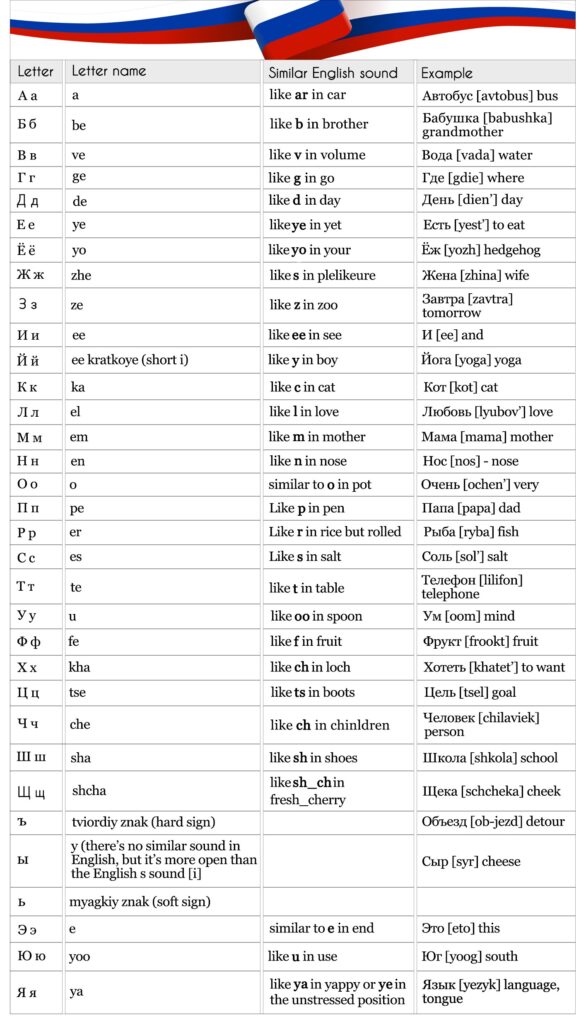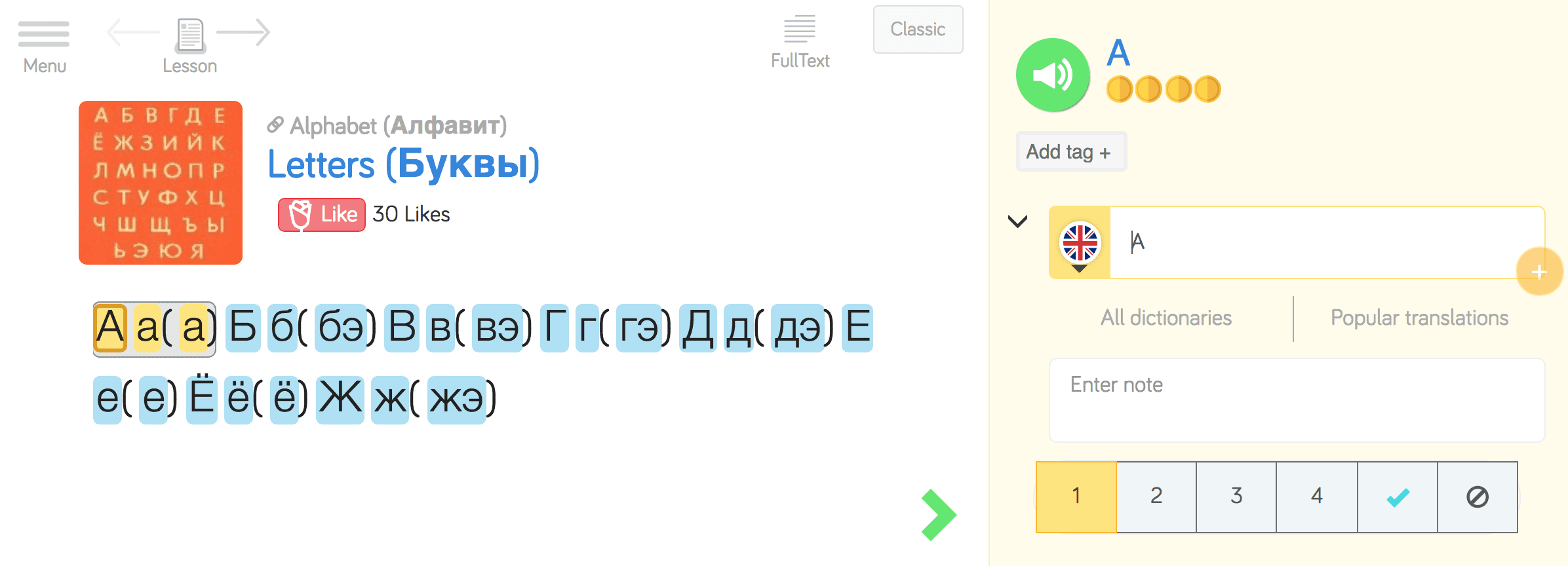Master the Russian Alphabet
An acquaintance with any language starts with its alphabet. Russian is no different and that’s why it’s important to get yourself familiar with the Russian alphabet in the early stages of your language learning journey.
The Russian writing system is based on the Cyrillic script, which looks like mumbo jumbo for an English speaker. However, you should not be scared. Some of the letters look the same as in English, and others sound similar or identical.
Let’s consider how to learn the alphabet quickly and how to memorize it.

Quick facts about the Russian alphabet

The alphabet has 33 letters out of which
– 10 are vowels (а, о, у, и, е, ё, э, ю, я, ы)
– 21 are consonants (б, в, г, д, ж, з, й,к, л, м, н, п, р, с, т, ф, х, ц, ч, ш, щ)
– 2 are signs (ь – the soft sign and ъ – the hard sign). These letters do not designate any sound
The first Cyrillic writing system appeared in the second half of the ninth century. It was created by Cyril, a Byzantine scholar and monk, and his brother Methodius.
The script stems from Greek writing. That’s why some of the letters resemble Greek symbols.
The civil Russian alphabet was introduced in the 17th century by Peter the Great, and before that Church Slavonic was the only written language in Russia.

Why is it hard to learn the Russian alphabet?
First and foremost, the Russian alphabet contains symbols that are not present in the Latin alphabet.
It also has some letters that look like Latin symbols but in fact denote different sounds (i.e., the Cyrillic H stands for the Roman N, and the P stands for the Latin R).
Russian writing is not easy to master as instead of block letters people use handwriting, which differs from the printed versions of the letters.

Here is how the Russian letters are pronounced, written and how they can be compared to their English counterparts:

How can one quickly memorize the Russian symbols?
Lots of exposure to the symbols of the Russian alphabet is key. You can learn Russian online by finding lessons to suit your interests in the LingQ library. There are even lessons that focus solely on the alphabet, so you can master reading and pronouncing the letters. LingQ is also available for Android and iOS.

All the Russian letters can be divided into the following four categories, which makes it easier for an English speaker to memorize the Cyrillic script:
1) True friends
This means the letters that look and sound the same as in English:

2) False friends
These are the letters that look the same as in English but designate a different sound:
 3) New friends
3) New friends
These are the symbols that look unfamiliar but have English equivalent letters that sound similar:
 4) Strangers
4) Strangers
Both look and sound different:

The Russian alphabet is an absolute must on your path of learning the language. Once you have mastered it, you will start to be able to read and write a few Russian phrases. Eventually you may find yourself reading novels and watching movies in Russian
Do not be discouraged by a set of symbols that might appear confusing at first. With a bit of time and effort, you will learn the alphabet and will see that it’s not as difficult as it seems.
Enjoyed this post? Check out polyglot and LingQ cofounder Steve Kaufmann’s blog post for some tips on learning Russian!
***
Ievgeniia Logvinenko holds a Master’s degree in English philology and is passionate about languages. In addition to English, she speaks Russian, Ukrainian, Polish, German and basic French.

